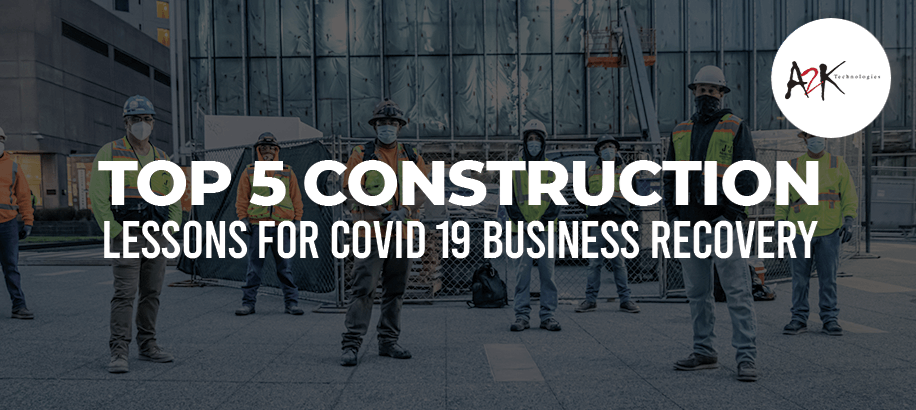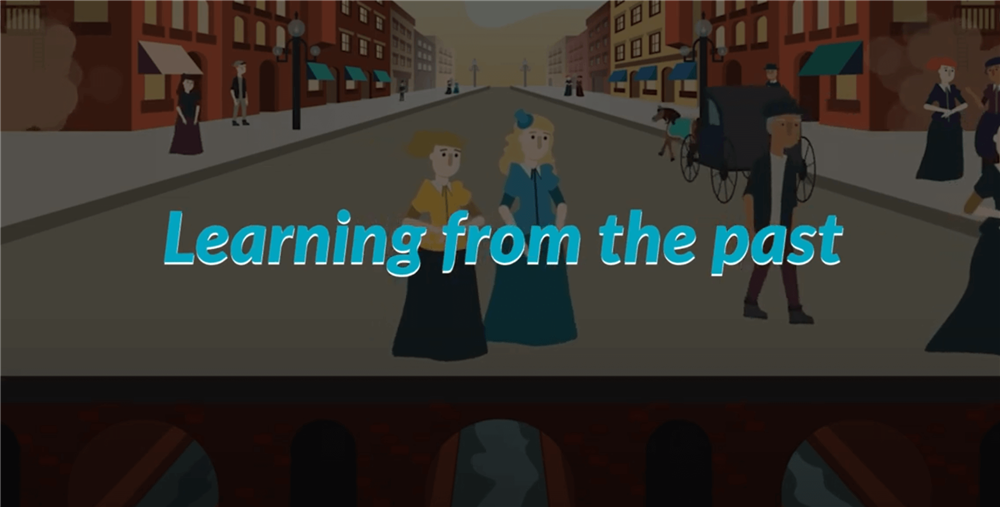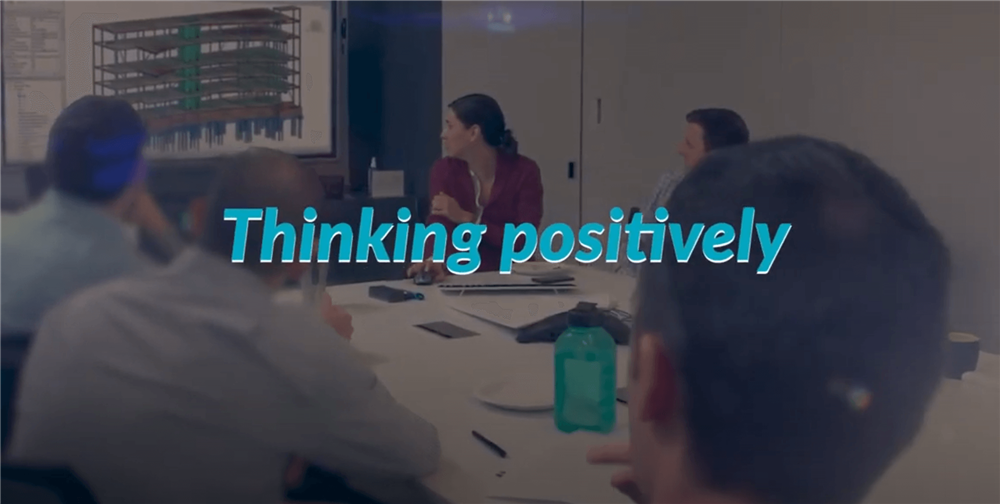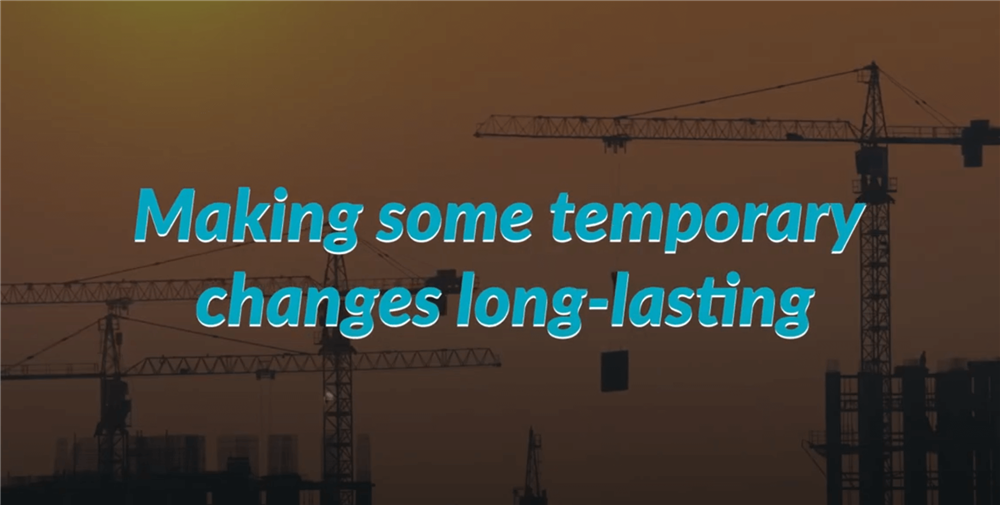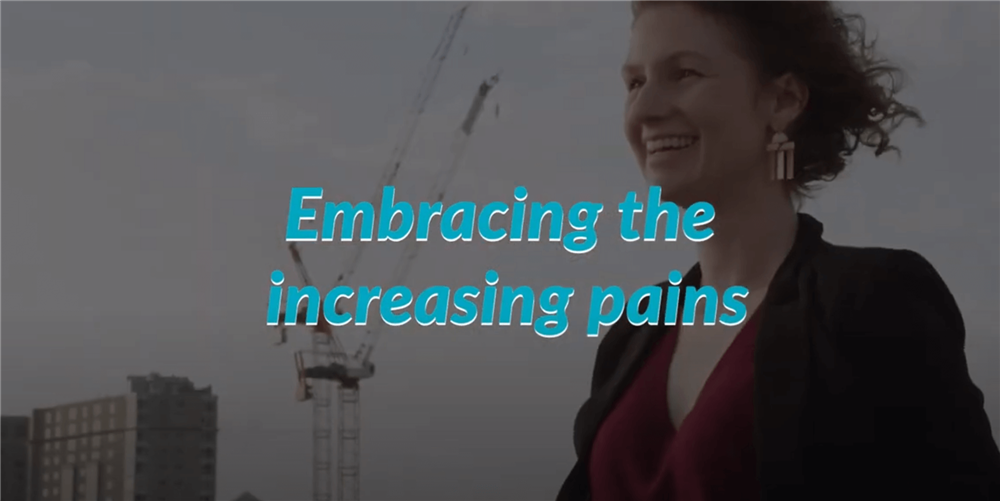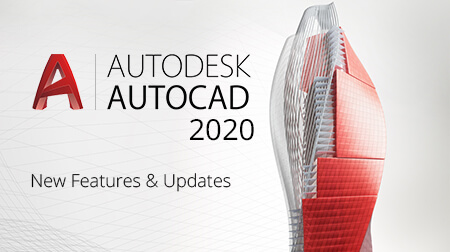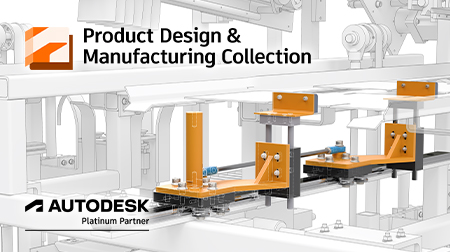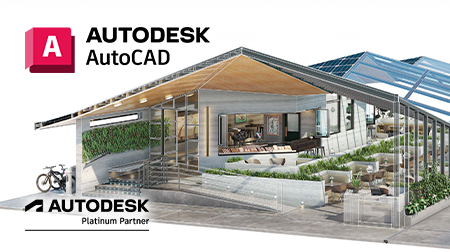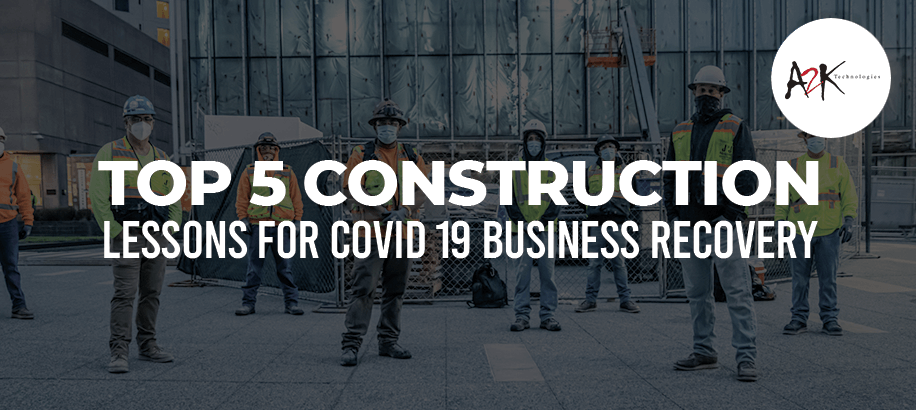
Top 5 Construction lessons for COVID 19 Business Recovery
What can you do to thrive in a post-COVID 19 construction industry?
It is often said that COVID-19 is unprecedented. It is not the first time in recent memory that industries have been given a possibly unrecoverable blow.
During the Great Recession, the construction industry faced decisions like the ones faced today with post COVID-19 business recovery. The outcome of those decisions may decide which construction businesses survive and which succeed in the wake of COVID-19, giving lessons to industry leaders.
Let’s take a look at the Top 5 Construction lessons for COVID-19 Business Recovery.
1. learning from the past…
The construction industry’s great recession from 2006 to 2011 left plenty of change in its wake and also lots of shuttered companies.
Few companies held on, refused change, and managed to just survive. Other businesses took the downturn as a time to invest in both their workers and core business operations. They invested in ground-breaking processes, new technology and spent resources on training and upskilling their employees.
In the year 2010, the launch of the Apple iPad kicked into gear an increase of technology exploration for construction, as brand-new apps allowed for improved collaboration between the office and on-site. After the great recession, these new companies saw a huge influx of the use and adoption of the technologies they just implemented.
For example, Bim or Building Information Modelling was in its early stages in the beginning of the recession. Dodge Data and Analytics’ 2012 Smart Market Report found that BIM implementation across the architecture, engineering, and construction industry increased from 28% in 2007 to 70% in 2012. “Though it may seem counterintuitive to increase spending during a recession, the research indicates that the industry is continuing to invest in a more efficient and productive future by embracing technologies and processes of BIM.” Said Dodge Data and Analytics Senior Director of Industry Insights, Stephen Jones.
Businesses that took the time to learn and implement BIM and field-collaboration tools in their work systems were one of the first ones hired when the economy began to recover. This is due to companies looking for better and more innovative approaches to better manage risk and allow more likely outcomes. According to Harvard Business Review, a study of 3,500 companies found that those who took business-wide measures to prepare for the decline saw revenues increase up to 4 times more during and after the Great Recession.
Businesses that didn’t take advantage of the chance to transform in 2008 could be paying a higher price today. Countless businesses will not survive this latest setback.
2. Thinking positively…
Businesses that choose to thrive compared to just survive often take advantage on the opportunities for growth. We will see businesses picking up other business not just in the construction industry, but in other industries as well. Acquisitions and merging will increase. This happened during the Great Recession and is happening again during the COVID-19 pandemic. You may be wondering why? This is because vertical integration leads improved margins and control.
Many traditional construction-management and general-contracting firms are merging and are adding layers to their businesses. For example, engineering, architecture, fabrication, and even commercial development. This move towards vertically integrated business models makes sense as the supply chain and project-planning processes are controlled. The outcomes also bring higher returns, and the margins improve.
With traditional mergers and acquisitions, some businesses may choose partnerships with new and unconventional players. For example, JLL’s partnership with Google to make an AI office assistant, Fluor’s partnership with IBM Watson, and Skanska and IKEA’s expansion of modular-home developments in the UK. This shows how companies can strengthen their businesses by expanding or improving their offerings.
3. Taking creative licenses with inspiration…
COVID-19 has fast-tracked the use of technologies that were already enabling firms in an array of industries to innovate the way they use technology. For example, the new-project creation rate in Autodesk BIM 360 Design soared approximately 350% globally since working conditions changed from office to home in mid-February 2020. Some construction projects ceased for an extended period, with many tools and technologies across all industries being utilised in innovative ways.
To name a few examples… virtual inspections with 360-degree cameras and video walk-throughs are keeping projects on schedule. Drones, cameras that monitor site and even Boston Dynamic’s SPOT, the robot dog are assisting to keep every worker up to date on a project, even if they aren’t physically on-site. Integrations between BIM 360 and ZOOM video conferencing can streamline the meeting minutes process and keep teams well prepared. A mixture of 4D animation, streaming presentations and pre-recorded videos are allowing social-distancing-friendly innovative ceremonies. Although not all construction breakthroughs can shift to a digital workflow, COVID-19 has shown that many of the industry’s normal practices are set for disruption.
Construction professionals are natural problem solvers and leaders will need to allow grace for innovation to flourish without fearing failure. With a creative license, reimagining certain workflows and responses to challenges are possible.

4. Making some temporary changes long-lasting
As businesses are looking to return to jobsites, workers are wondering if they can keep a few work-from home-models that have been created.
Productivity, attracting and retaining a robust and a diverse workforce have been a struggle for decades in the construction industry. There are a few reasons for that, one of the biggest problems is directly related to the style in which work is done in construction. At times, teams have long hours and tight deadlines.
The pandemic has shown that creating more flexibility won’t necessarily affect productivity in a negative way. When more flexibility is created, you get happier employees and new styles of working are discovered. It is possible to maintain and improve collaboration as teams take advantage of technology to find problems quicker and get real-time answers. The added benefit is the people factor - attracting and retaining a stronger, more interesting, and more diverse workforce is possible by making technology, innovation, and flexibility apart of the parcel to the culture of the business.
5. Embracing the increasing pains
Construction is known for being risk hesitant. A limited desire to change the status quo by investing in innovation and technology often happens. Projects can last a year or even more and run on extremely thin margins, which adds to the disinterest in trying something new. The goal instead becomes to completing a project as quickly as possible with as little loss as possible.
If construction leaders don’t choose to push for changes and embrace the required cultural shifts, opportunities can potentially be lost. Changes such as technology adoption, the implementation of tools and the exchange of data have been discussed for a long time amongst construction leaders. In the 2009 UK Constructing Excellence report, Andrew Wolstenholme quoted Winston Churchill’s famous phrase, “Never waste a good crisis.” A key point to take away from this report was that big business-model moves needed to occur to realise the desired outcomes of improved safety, schedule, communication, cost, and productivity in construction.
The concepts aren’t anything new, but the time is now. COVID-19 acts as a shining light on how important it will be to have these pieces in place. Not just to thrive as the world emerges on the other side of the pandemic, but to prepare for the next disruptive event that may happen in the future.
Watch the video below:


